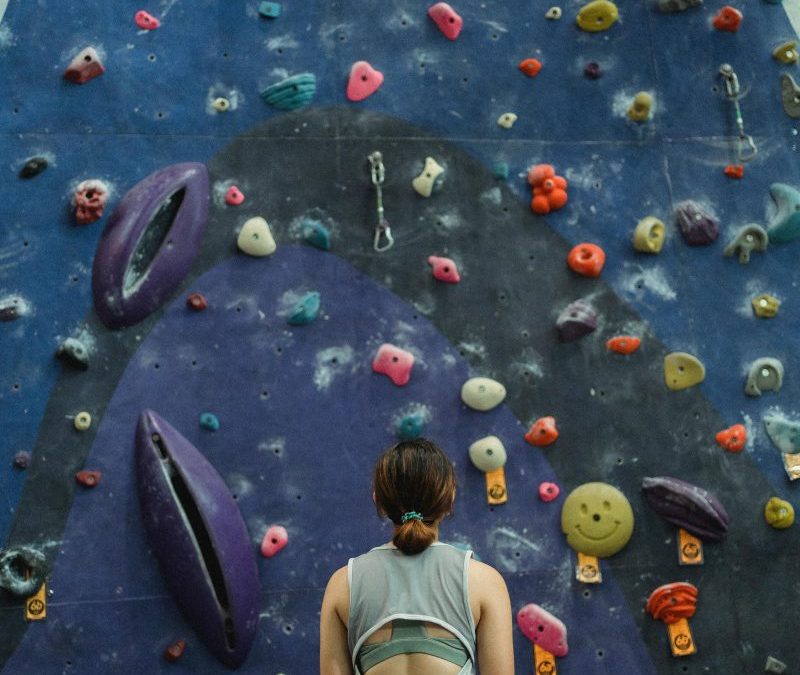Last Updated on: 14th July 2024, 09:05 am
Introduction to High-Altitude Training

High-altitude training, a method embraced by athletes worldwide, traces its origins to the 1968 Olympics. This technique involves training in environments where oxygen levels are significantly lower than at sea level. The scarcity of oxygen forces the body to adapt, enhancing athletic performance upon return to lower altitudes. The benefits are manifold, including:
- Increased endurance
- Improved strength
- Higher red blood cell count
These are crucial for athletes striving for peak performance.
The purpose of this article is to delve into how high-altitude training can be a game-changer for athletes. By exploring the physiological adaptations and the strategic implementation of this training method, we aim to provide a comprehensive overview. This insight not only illuminates the path to superior athletic performance but also underscores the importance of innovative training techniques in achieving unparalleled success.
The Science Behind High-Altitude Training

Understanding Oxygen Availability and Its Effects on the Body
At high altitudes, the air is thinner, meaning there’s less oxygen available. When athletes train under these conditions, their bodies are pushed to compensate for the oxygen deficit. This challenge initiates a cascade of physiological responses aimed at improving oxygen delivery and utilization. Essentially, the body is learning to do more with less.
Physiological Adaptations to High Altitude
Adapting to high altitude involves several key physiological changes, including:
- An increase in the production of red blood cells, which enhances the body’s oxygen-carrying capacity.
- Improvement in the efficiency of oxygen utilization by the muscles.
These adaptations collectively contribute to enhanced aerobic capacity and endurance, enabling athletes to perform at a higher level when they return to lower altitudes.
Impact on Endurance, Strength, and Recovery
High-altitude training not only boosts endurance by improving the body’s oxygen transport and utilization systems but also has a positive impact on:
- Strength: Increasing muscle efficiency and stamina.
- Recovery: Leading to quicker recovery times, as the body becomes more efficient at clearing metabolic byproducts and replenishing energy stores.
This comprehensive enhancement of physical capabilities makes high-altitude training a powerful tool in the arsenal of athletes seeking to surpass their limits.
Key Components of an Effective High-Altitude Training Program

Duration of Exposure to High Altitude for Optimal Benefits
For athletes to reap the maximum benefits of high-altitude training, a stay of at least two to three weeks is recommended. This duration allows the body sufficient time to undergo the physiological adaptations necessary for improving performance. Shorter periods may not provide significant benefits, while longer stays can lead to diminishing returns and increased risk of overtraining.
Intensity and Type of Workouts at High Altitude
Workouts at high altitude should start with moderate intensity to allow the body to adjust to the reduced oxygen levels. Gradually, the intensity can be increased, incorporating a mix of:
- Aerobic exercises
- Anaerobic exercises
- Strength workouts
Each plays a role in enhancing the body’s oxygen utilization and overall performance.
Importance of Acclimatization Period
Acclimatization is the cornerstone of a successful high-altitude training program. This period, typically the first week, involves light training and plenty of rest. It’s a time for the body to adjust to the lower oxygen availability, reducing the risk of altitude sickness and setting the stage for more intense training sessions.
Integration with Sea-Level Training
Integrating high-altitude training with sea-level workouts is essential for translating the gains made at altitude to improved performance at lower elevations. After returning from high altitude, athletes should continue with a tailored training program that capitalizes on their enhanced physiological state. This approach ensures the maintenance of adaptations and maximizes the benefits of the high-altitude experience.
Nutritional Strategies to Enhance High-Altitude Training Outcomes

Adjustments in Diet for High-Altitude Conditions
At high altitudes, the body’s metabolism speeds up, increasing caloric needs. Athletes should focus on a diet rich in:
- Carbohydrates for sustained energy.
- Protein for muscle repair and recovery.
- Iron-rich foods to support increased red blood cell production.
Hydration Strategies to Combat the Diuretic Effect of High Altitude
Hydration takes on new importance at high altitudes, where the air is dryer and the body loses more fluid through respiration. The diuretic effect of altitude further accelerates fluid loss, making it essential to increase water intake. Athletes should aim to drink before they feel thirsty, incorporating electrolyte-enhanced beverages to replenish minerals lost through sweat.
Supplements That Can Aid in Adaptation and Recovery
Supplementation can play a pivotal role in optimizing high-altitude training outcomes. Consider incorporating:
- Iron supplements to prevent anemia, especially in athletes with increased iron needs.
- Antioxidants, such as Vitamin C and E, to help combat oxidative stress induced by lower oxygen levels.
- Omega-3 fatty acids, found in fish oil supplements, to reduce inflammation, aiding in recovery.
- Beetroot juice, known for its high nitrate content, to improve oxygen flow in the body, enhancing endurance and performance.
Monitoring and Managing the Risks of High-Altitude Training

Recognizing Symptoms of Altitude Sickness
Altitude sickness is a potential risk for athletes training at high elevations. Symptoms include headache, nausea, dizziness, and fatigue. Early recognition is crucial for preventing more severe complications, such as pulmonary or cerebral edema. Monitoring for these symptoms allows for timely intervention, ensuring the safety and health of the athlete.
Strategies for Minimizing the Risks Associated with High-Altitude Exposure
Minimizing risk begins with a well-planned acclimatization schedule. Gradual ascent allows the body time to adjust to lower oxygen levels, reducing the likelihood of altitude sickness. Adequate hydration and nutrition are also vital, as they support the body’s adaptation processes. Furthermore, incorporating rest days into the training schedule helps prevent overexertion, which can exacerbate the effects of high altitude.
Importance of a Gradual Ascent and Descent
A gradual ascent is paramount in high-altitude training. It allows the body to slowly adapt to the decreased oxygen availability, minimizing the risk of altitude sickness. Similarly, a gradual descent is essential for safely transitioning back to lower altitudes. Abrupt changes in elevation can lead to disorientation and other symptoms of altitude sickness, undermining the benefits of the training. By carefully managing ascent and descent, athletes can maximize the advantages of high-altitude training while safeguarding their health.
By recognizing the symptoms of altitude sickness and implementing strategies to minimize risks, athletes can harness the full potential of high-altitude training. A gradual approach to ascent and descent further ensures the safety and effectiveness of this powerful training method. With these precautions in place, athletes are well-positioned to achieve unparalleled performance enhancements.
Case Studies: Success Stories in High-Altitude Training

High-altitude training has propelled numerous athletes to the pinnacle of their sports. For instance, Kenyan and Ethiopian long-distance runners, who often train at elevations exceeding 2,500 meters, consistently dominate international competitions. Their remarkable endurance and VO2 max levels are partly attributed to the physiological benefits gained from training at such altitudes.
Another success story is the U.S. Women’s National Soccer Team, which utilized high-altitude training before winning the World Cup. The team experienced noticeable improvements in stamina and recovery times, which were crucial during the tournament’s demanding schedule.
Olympic cyclists and marathon runners also frequently turn to high-altitude training. They’ve observed significant enhancements in aerobic capacity and lactate threshold, allowing for sustained high-intensity performance. Coaches and sports scientists alike praise the method for its role in breaking personal and world records.
- These examples underscore the transformative impact of high-altitude training.
- Athletes across various disciplines have seen measurable improvements in performance metrics, such as VO2 max and endurance, which translate into competitive success.
- Coaches often report that athletes return from high-altitude camps with a newfound level of fitness, ready to outperform their sea-level trained counterparts.
By integrating high-altitude training into their regimen, athletes gain a competitive edge. The stories of their triumphs serve as powerful testaments to the efficacy of this training approach, inspiring others to reach for new heights in their athletic pursuits.
Implementing High-Altitude Training in Your Athletic Routine

Assessing Suitability for High-Altitude Training
Not all athletes will benefit equally from high-altitude training. It’s essential to consider individual health status, training history, and specific athletic goals. Consulting with a healthcare provider can help determine if this method aligns with your needs and aspirations.
Finding High-Altitude Training Facilities or Locations
Seeking the right environment is crucial. Many opt for natural high-altitude locations, such as mountainous regions, while others prefer controlled conditions in altitude simulation facilities. Researching and visiting potential sites can guide your selection process.
Creating a Balanced Training Plan
A successful high-altitude training program integrates sessions at elevation with sea-level workouts. This combination ensures the body adapts to low-oxygen conditions while maintaining overall performance. Crafting this plan requires careful consideration of workout types, intensity, and recovery periods.
Consulting with Professionals
Personalized advice is invaluable. Sports scientists and coaches experienced in high-altitude training can offer insights tailored to your physiological responses and performance goals. Regular monitoring by these professionals ensures adjustments are made as needed, optimizing outcomes.
- High-altitude training, when implemented thoughtfully, can elevate an athlete’s performance beyond conventional limits.
- By assessing suitability, finding the right location, creating a balanced plan, and consulting with experts, athletes can harness the power of training at elevation.
- This strategic approach not only prepares the body to excel in low-oxygen environments but also enhances overall athletic capabilities, setting the stage for remarkable achievements.
In Closing
High-altitude training unlocks peak athletic potential. It embodies the essence of resilience, pushing athletes to adapt and thrive. Through the interplay of physiological adaptation and strategic implementation, this method offers a path to superior performance, balancing the rigors of training with the rewards of enhanced capabilities. Success stories across sports disciplines underscore its effectiveness, inspiring athletes to explore new limits. Embrace high-altitude training to transcend your current boundaries and achieve unparalleled athletic success.
Improving Athletic Performance with High-Altitude Training FAQs
Yes, there are alternatives to natural high-altitude training, such as hypoxic chambers and tents that simulate high-altitude conditions. These tools allow athletes to live or train under hypoxic conditions at sea level, offering similar benefits to natural high-altitude training. This method is particularly useful for athletes who cannot travel to high-altitude locations but still want to gain the advantages of altitude exposure.
The benefits of high-altitude training can be maintained for a limited time after returning to sea level, typically for about two to three weeks. To extend the performance gains, athletes often use strategies such as intermittent exposure to high altitudes or sleeping in hypoxic tents. However, the most significant performance enhancements are usually observed immediately upon return to lower altitudes.
Yes, high-altitude training can have negative effects, such as altitude sickness, decreased training intensity due to lower oxygen availability, and potential overtraining. Symptoms of altitude sickness include headache, nausea, fatigue, and dizziness, which can hinder training effectiveness. Proper acclimatization and a gradual increase in training intensity can help mitigate these risks.
Athletes can prepare for high-altitude training by gradually increasing their altitude exposure, starting with shorter durations and lower altitudes before moving to higher elevations. It’s also important to focus on hydration, nutrition, and rest to support the body’s adaptation process. Pre-acclimatization strategies, such as using a hypoxic tent before actual altitude exposure, can also help minimize the risks associated with high-altitude training.
High-altitude training improves athletic performance by increasing the number of red blood cells and hemoglobin concentration, enhancing oxygen delivery to the muscles. This physiological adaptation allows athletes to perform better at sea level, as their bodies can utilize oxygen more efficiently. The benefits include improved endurance, strength, and recovery times.
Athletes should train at high altitude for a minimum of two to three weeks to begin seeing physiological adaptations and performance improvements. The optimal duration can vary, but a period of four to six weeks is often recommended for maximum benefit. Training beyond this period can lead to diminishing returns and increased risk of overtraining.
High-altitude training is most beneficial for endurance athletes, but it can also aid athletes in sports requiring high levels of stamina and aerobic capacity. However, the effectiveness can vary based on the individual’s response to altitude, the sport, and the duration of the training. Athletes in sports that rely more on strength or power may not see as significant benefits.
Acclimatization refers to the process of the body gradually adapting to the lower oxygen levels found at high altitudes, which can take several days to weeks. This process is crucial for minimizing the risks of altitude sickness and maximizing the benefits of high-altitude training. It involves physiological adjustments, including increased breathing and heart rates, that improve the body’s oxygen uptake and utilization.
High-altitude training is a method athletes use to improve performance by training at elevations typically above 2,400 meters (8,000 feet) where the air is thinner. This type of training enhances the body’s ability to transport and utilize oxygen more efficiently when returning to lower altitudes. It is particularly beneficial for endurance athletes, such as runners and cyclists, aiming to increase their aerobic capacity and stamina.
Nutrition plays a critical role in high-altitude training, as the body requires more calories and specific nutrients to cope with the stress of lower oxygen levels. Adequate hydration and increased intake of carbohydrates are essential, as carbohydrates are more efficiently used for energy at high altitudes. Additionally, iron supplementation may be beneficial, as it supports the production of red blood cells, which are crucial for oxygen transport.
Orlando is a all round athlete from Australia, now resident in Germany. His sports of passion of American Football(Offensive line), weight training and indoor rock climbing where he uses his 195cm wing span to his advantage.



